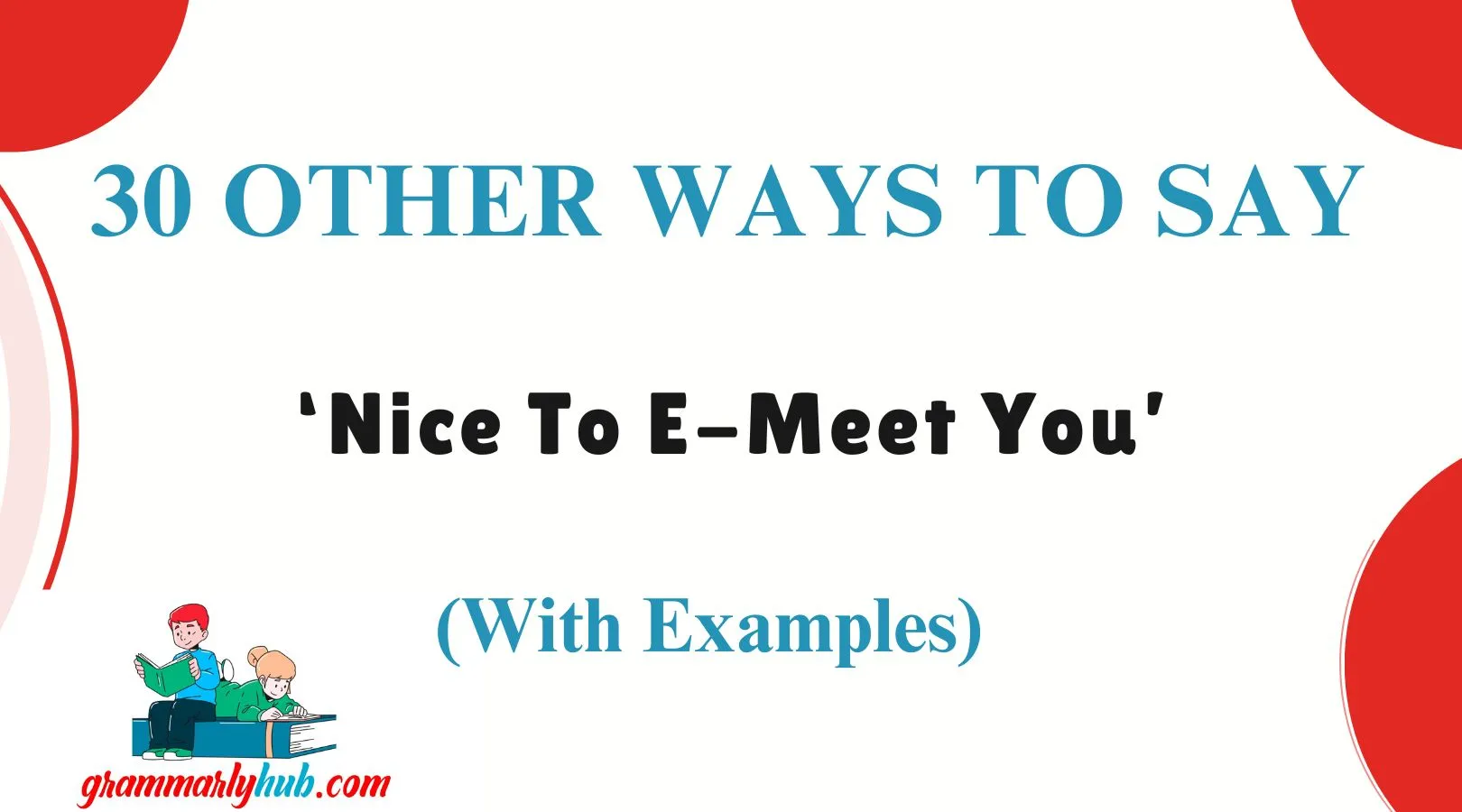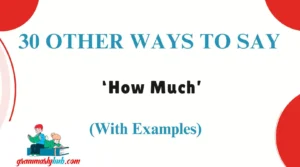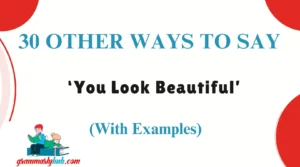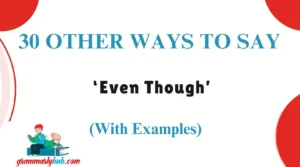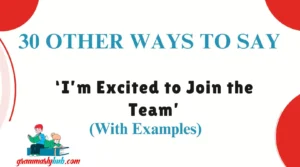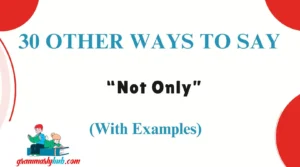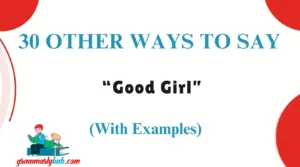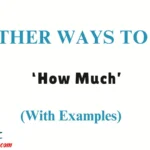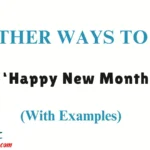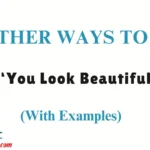Finding the right words to connect in a digital world can make all the difference. A simple greeting like “Nice to e-meet you” is polite and functional, but sometimes it can feel impersonal or overused.
Whether you’re introducing yourself on email, LinkedIn, or Zoom, using thoughtful, warm alternatives can instantly make your message more human and memorable.
In this guide, you’ll discover 30 professional yet empathetic ways to say “Nice to e-meet you,” with real-life examples and clear context to help you choose the perfect phrase—every time.
What Does “Nice To E-Meet You” Mean?
“Nice to e-meet you” is a digital version of “Nice to meet you,” used when meeting someone for the first time virtually—usually via email or online messaging. This phrase acknowledges the fact that the introduction isn’t happening in person, but still seeks to show politeness, respect, and a positive tone. “Hi Sarah, Nice to e-meet you! Looking forward to working together on the upcoming campaign.”
When to Use “Nice To E-Meet You”
- When connecting with someone for the first time via email, LinkedIn, or video call
- In professional introductions
- When it’s important to recognize that your meeting is virtual and not in-person
Is It Professional/Polite to Say “Nice To E-Meet You”?
Yes, “Nice to e-meet you” is generally considered professional and polite, particularly in virtual settings. It serves as a courteous way to acknowledge a new online connection. In a world where remote work and digital communications are increasingly the norm, this phrase has become a standard expression in professional environments, especially when meeting someone for the first time over email, video call, or social platforms like LinkedIn.
However, it’s important to be mindful of context. While it’s an acceptable and safe choice in most situations, some individuals might find it a bit too formulaic or overused. It can come off as impersonal if used repetitively without adding warmth or personality to your message.
Pros or Cons
Pros:
- Polite and clear
- Recognizes the online setting
- Quick and easy
Cons:
- Overused
- Can feel impersonal or scripted
- Not ideal for building deeper rapport
Nice to E-Meet You Synonyms:
- Pleased to Connect With You
- Delighted to Make Your Virtual Acquaintance
- It’s Great to Connect Online
- A Pleasure to E-Meet You
- Grateful for the Introduction
- So Glad We’re Finally Connecting
- I’ve Been Looking Forward to This Introduction
- Wonderful to Finally Connect
- It’s a Privilege to Meet You Virtually
- Excited to Get to Know You
- Happy to Be in Touch
- Honored to Connect With You
- I Appreciate the Opportunity to Connect
- Great to Be Introduced
- It’s a Joy to Connect With You
- Thank You for Reaching Out
- I’m Glad We Could Connect
- What a Pleasure to Connect
- Excited to Learn More About You
- Thanks for Taking the Time to Connect
- Thanks for the Digital Handshake
- Cheers to New Connections
- Looking Forward to Working With You
- Thanks for Connecting
- Glad to Be Connected
- Thankful to Connect
- Let’s Make Something Great Together
- Ready to Dive In
- This Introduction Means a Lot
- Let’s Stay in Touch and Build Something Together
1. Pleased to Connect With You
Definition: A courteous way to express gratitude for a new connection.
Explanation: It’s formal yet friendly and works well in professional emails or messages.
Scenario Example:
“Hi Alex, I’m pleased to connect with you. Your work in digital health is truly impressive.”
Worst Use: Avoid using with someone you’ve already met several times.
Tone: Respectful, warm, professional
2. Delighted to Make Your Virtual Acquaintance
Definition: A more charming and traditional twist on the phrase.
Explanation: This option adds a touch of sophistication and personality.
Scenario Example:
“Good afternoon! Delighted to make your virtual acquaintance—I’ve heard great things about your work.”
Worst Use: Might feel too formal or outdated in casual work settings.
Tone: Polished, formal, friendly
3. It’s Great to Connect Online
Definition: A modern and straightforward greeting that emphasizes the online aspect.
Explanation: This phrase is casual but professional, ideal for digital-first environments.
Scenario Example:
“Hi Mark, it’s great to connect online! Looking forward to collaborating on this.”
Worst Use: May not fit highly formal or legal correspondence.
Tone: Approachable, upbeat
4. A Pleasure to E-Meet You
Definition: A close variant that adds warmth to the standard phrase.
Explanation: This version softens the language and is widely acceptable.
Scenario Example:
“Hello Susan, a pleasure to e-meet you. I’m excited to join the project.”
Worst Use: Still includes “e-meet,” so if you’re avoiding that entirely, skip this one.
Tone: Courteous, positive
5. Grateful for the Introduction
Definition: Focuses on appreciation rather than the meeting itself.
Explanation: Excellent for referral-based or third-party introductions.
Scenario Example:
“Thanks, John. Grateful for the introduction—looking forward to getting to know you better, Maria.”
Worst Use: Not ideal when the connection is direct (i.e., not through a mutual party).
Tone: Thankful, genuine
6. So Glad We’re Finally Connecting
Definition: Emphasizes anticipation and enthusiasm.
Explanation: Great for situations where there’s been prior conversation or scheduling delays.
Scenario Example:
“Hi Priya! So glad we’re finally connecting after all those email threads.”
Worst Use: May seem overexcited if it’s a formal setting.
Tone: Friendly, enthusiastic
7. I’ve Been Looking Forward to This Introduction
Definition: Shows intentionality and respect for the person’s time.
Explanation: It tells the other person they’re valued even before speaking.
Scenario Example:
“Hello Thomas, I’ve been looking forward to this introduction—your background in UX is inspiring.”
Worst Use: Avoid in cold outreach without context.
Tone: Respectful, intentional
8. Wonderful to Finally Connect
Definition: Adds warmth and relatability to a first-time meeting.
Explanation: A strong option for bridging both professional and personal tone.
Scenario Example:
“Hi, Jasmine! Wonderful to finally connect—I’ve been following your work on sustainability.”
Worst Use: Doesn’t work if there’s been no previous context.
Tone: Sincere, warm
9. It’s a Privilege to Meet You Virtually
Definition: Adds a level of reverence, especially for senior professionals.
Explanation: Best used when communicating with leaders, mentors, or distinguished guests.
Scenario Example:
“Dr. Carter, it’s a privilege to meet you virtually. Your research has had a lasting impact.”
Worst Use: Overkill for peer-level or casual introductions.
Tone: Respectful, formal
10. Excited to Get to Know You
Definition: Personal and enthusiastic greeting.
Explanation: Use when building rapport or long-term collaboration.
Scenario Example:
“Hi Diego, excited to get to know you and learn about your goals.”
Worst Use: May sound too personal for brief, transactional emails.
Tone: Friendly, open
11. Happy to Be in Touch
Definition: A casual, friendly way to begin a new connection.
Explanation: This greeting feels easygoing and works well in most semi-formal contexts.
Scenario Example:
“Hi Lena, happy to be in touch. I’m looking forward to seeing how we can work together.”
Worst Use: Too relaxed for high-level executive introductions.
Tone: Warm, conversational
12. Honored to Connect With You
Definition: Communicates admiration and respect for the recipient.
Explanation: Best used when reaching out to someone influential or senior in your field.
Scenario Example:
“Professor Lee, honored to connect with you. Your recent publication deeply resonated with me.”
Worst Use: Avoid using if there’s no real reason to show high praise.
Tone: Respectful, professional
13. I Appreciate the Opportunity to Connect
Definition: Shows gratitude and humility during a new introduction.
Explanation: Perfect for interviews, partnership discussions, or mentorship situations.
Scenario Example:
“Thanks for the message, Helen. I appreciate the opportunity to connect and collaborate.”
Worst Use: Not ideal for informal or peer-to-peer settings.
Tone: Appreciative, polished
14. Great to Be Introduced
Definition: A simple, middle-ground alternative that still sounds warm and friendly.
Explanation: This phrase works well when a third party connects you.
Scenario Example:
“Thanks, Steve. Great to be introduced, and I look forward to our chat next week.”
Worst Use: Avoid using if no introduction actually occurred.
Tone: Professional, approachable
15. It’s a Joy to Connect With You
Definition: Infuses a bit more emotion and personality into your greeting.
Explanation: Best for creative or people-centric fields where warmth matters.
Scenario Example:
“Hi Clara, it’s a joy to connect with you—your design work is so inspiring.”
Worst Use: May be too expressive for ultra-corporate or formal contexts.
Tone: Warm, enthusiastic
16. Thank You for Reaching Out
Definition: Polite acknowledgment that opens the conversation on a positive note.
Explanation: Ideal for replying to an inbound message or LinkedIn connection.
Scenario Example:
“Hi Michael, thank you for reaching out. I’m excited to discuss this further.”
Worst Use: Avoid when you’re the one initiating the conversation.
Tone: Courteous, responsive
17. I’m Glad We Could Connect
Definition: A casual yet professional greeting after a successful connection.
Explanation: Perfect when scheduling has been a challenge or you’ve been trying to connect for a while.
Scenario Example:
“Hi Nadia, I’m glad we could connect—looking forward to diving into the project details.”
Worst Use: Not ideal for first-time cold outreach.
Tone: Relieved, friendly
18. What a Pleasure to Connect
Definition: A slightly elevated version of a standard greeting.
Explanation: Elegant and appropriate in both business and creative settings.
Scenario Example:
“What a pleasure to connect, Sam! Your insights on branding are incredibly valuable.”
Worst Use: Could feel too flowery in conservative industries.
Tone: Positive, polished
19. Excited to Learn More About You
Definition: Demonstrates curiosity and openness to relationship-building.
Explanation: Excellent for partnerships, networking, or initial discovery calls.
Scenario Example:
“Hi Janine, excited to learn more about you and your team’s vision.”
Worst Use: Too personal for generic or automated outreach.
Tone: Open, engaged
20. Thanks for Taking the Time to Connect
Definition: Highlights respect for the recipient’s time.
Explanation: Great for meetings with busy professionals or high-level leaders.
Scenario Example:
“Hi Raj, thanks for taking the time to connect—your schedule must be packed!”
Worst Use: Avoid when reaching out with no real time investment from the other party yet.
Tone: Grateful, respectful
21. Thanks for the Digital Handshake
Definition: A creative and modern spin that nods to virtual communication.
Explanation: Adds light humor and personality, ideal for startups or casual brands.
Scenario Example:
“Thanks for the digital handshake, Emma! Excited to explore synergies.”
Worst Use: Too informal for corporate or legal fields.
Tone: Light, friendly
22. Cheers to New Connections
Definition: A celebratory way to acknowledge a new relationship.
Explanation: Best for industries where enthusiasm and camaraderie are encouraged.
Scenario Example:
“Cheers to new connections, Alex! Can’t wait to get started.”
Worst Use: Might come off as too relaxed in formal situations.
Tone: Upbeat, cheerful
23. Looking Forward to Working With You
Definition: Practical and to the point, with a focus on future collaboration.
Explanation: Excellent for new teammates, vendors, or contractors.
Scenario Example:
“Hi Sophie, looking forward to working with you on the next rollout.”
Worst Use: Not ideal for non-work-related connections.
Tone: Professional, optimistic
24. Thanks for Connecting
Definition: A short, safe, and effective greeting.
Explanation: Good for LinkedIn messages or simple introductions.
Scenario Example:
“Thanks for connecting, Jared. Let’s stay in touch.”
Worst Use: Too vague or minimal in more formal outreach.
Tone: Neutral, courteous
25. Glad to Be Connected
Definition: A direct acknowledgment of the new relationship.
Explanation: Ideal when you want to be warm without sounding overly enthusiastic.
Scenario Example:
“Glad to be connected, Lisa. I’ve been following your updates for a while now.”
Worst Use: May not stand out if you’re trying to be memorable.
Tone: Positive, balanced
26. Thankful to Connect
Definition: Slightly more emotional, with a humble tone.
Explanation: Useful in nonprofit, community, or mission-driven sectors.
Scenario Example:
“Thankful to connect, Matthew. Your work with refugees is truly inspiring.”
Worst Use: Can feel too sentimental for fast-paced business emails.
Tone: Appreciative, warm
27. Let’s Make Something Great Together
Definition: Encouraging and future-facing greeting.
Explanation: Excellent for creative collaborations or startup partnerships.
Scenario Example:
“Hey Taylor, let’s make something great together! Love your energy.”
Worst Use: Too casual for legal or formal financial services.
Tone: Collaborative, inspiring
28. Ready to Dive In
Definition: Focuses on action and shared enthusiasm.
Explanation: Works well when the connection is followed by a project kickoff.
Scenario Example:
“Hi Oliver, ready to dive in! Let me know how I can support next steps.”
Worst Use: Avoid if the connection is still in the early getting-to-know-you phase.
Tone: Energetic, action-oriented
29. This Introduction Means a Lot
Definition: Adds emotional value to a professional introduction.
Explanation: Ideal when someone you respect makes the connection for you.
Scenario Example:
“Thanks, Amy. This introduction means a lot—I’ve admired Daniel’s work for years.”
Worst Use: Inauthentic if you don’t have genuine feelings about the connection.
Tone: Sincere, heartfelt
30. Let’s Stay in Touch and Build Something Together
Definition: Ends the intro with an eye toward long-term value.
Explanation: Excellent for networking, partnerships, and creative collaborations.
Scenario Example:
“Great chatting, Maya. Let’s stay in touch and build something together.”
Worst Use: Too vague if no actual project or interest is discussed.
Tone: Optimistic, future-focused
Conclusion
Crafting meaningful connections in digital spaces is more than choosing a polite phrase—it’s about being thoughtful, authentic, and intentional with your words. These 30 alternatives to “Nice to e-meet you” allow you to communicate in ways that reflect your tone, personality, and purpose, making a lasting impression from the very first message.
Whether you’re aiming for professional, friendly, creative, or heartfelt, there’s an option here for every conversation.

Emma Brooke is the voice behind Grammarly Hub, where grammar meets clarity. With a deep passion for the written word, Emma helps readers navigate the tricky waters of English grammar, writing tips, and effective communication.
